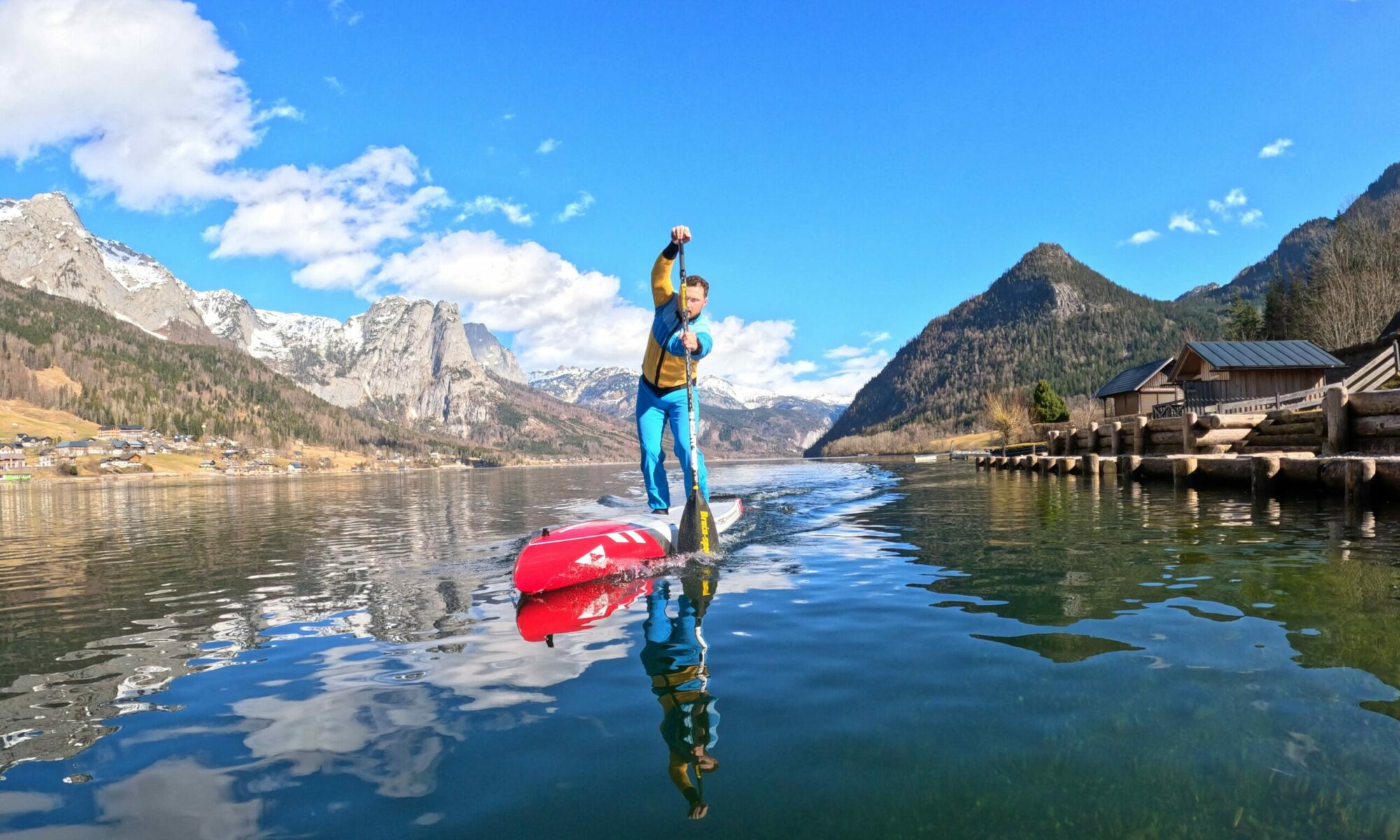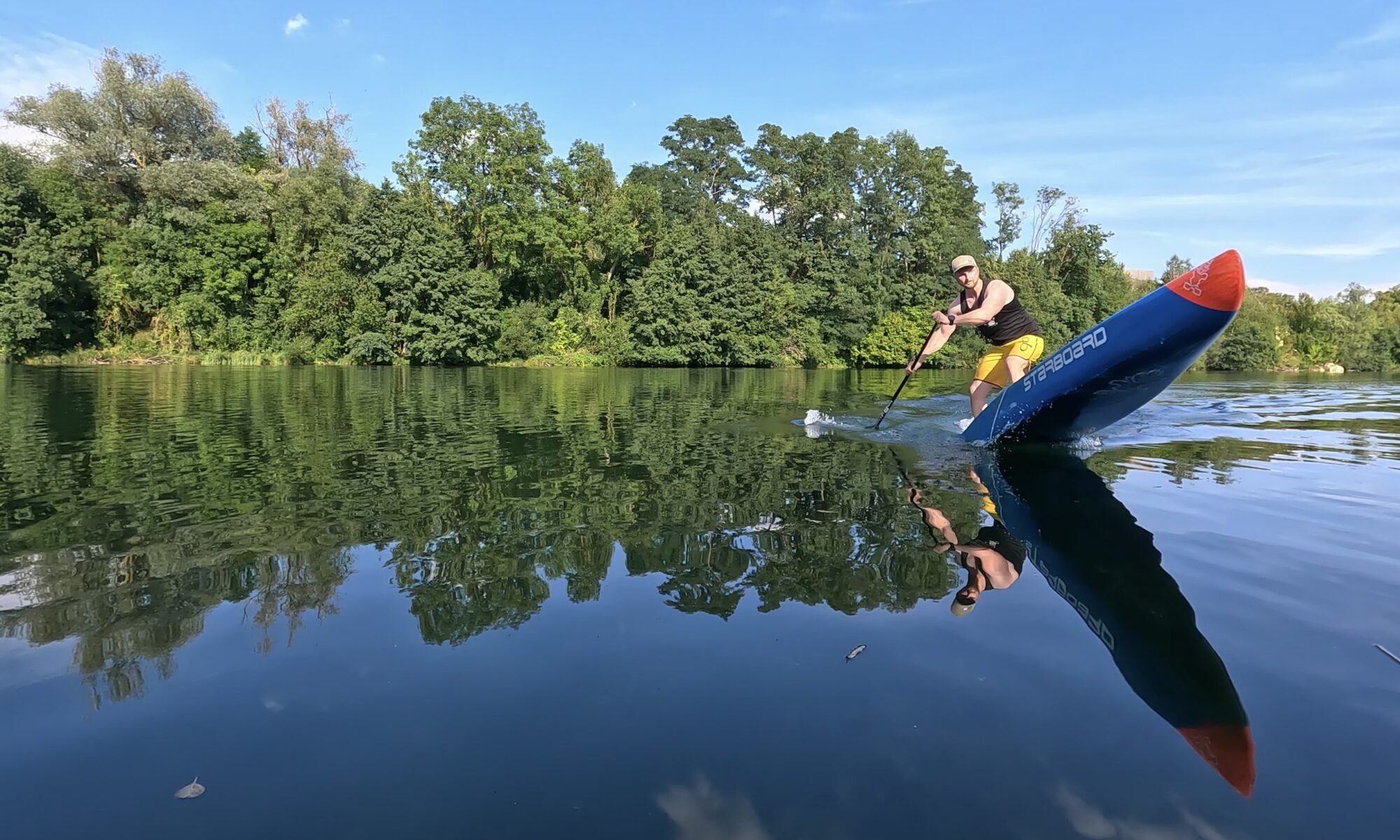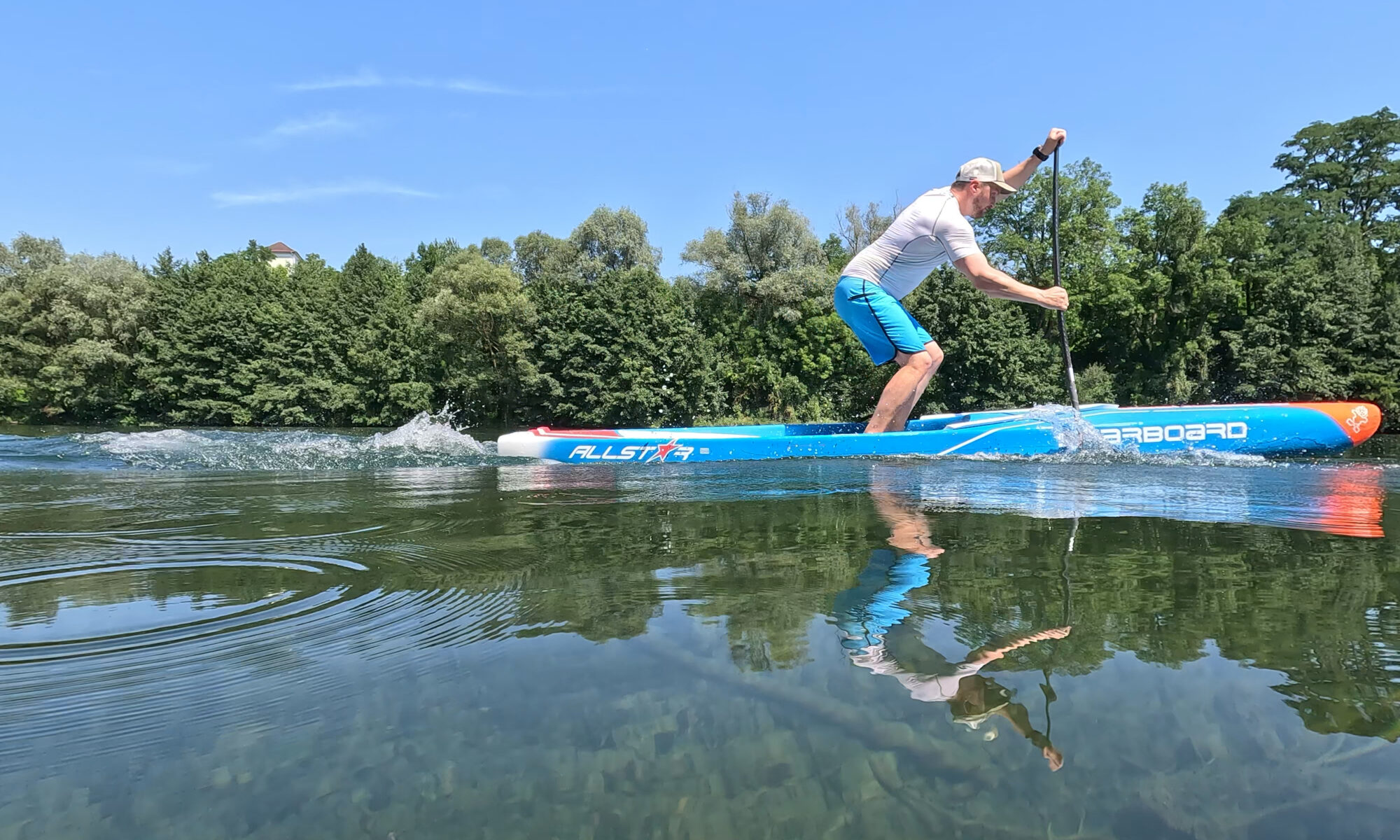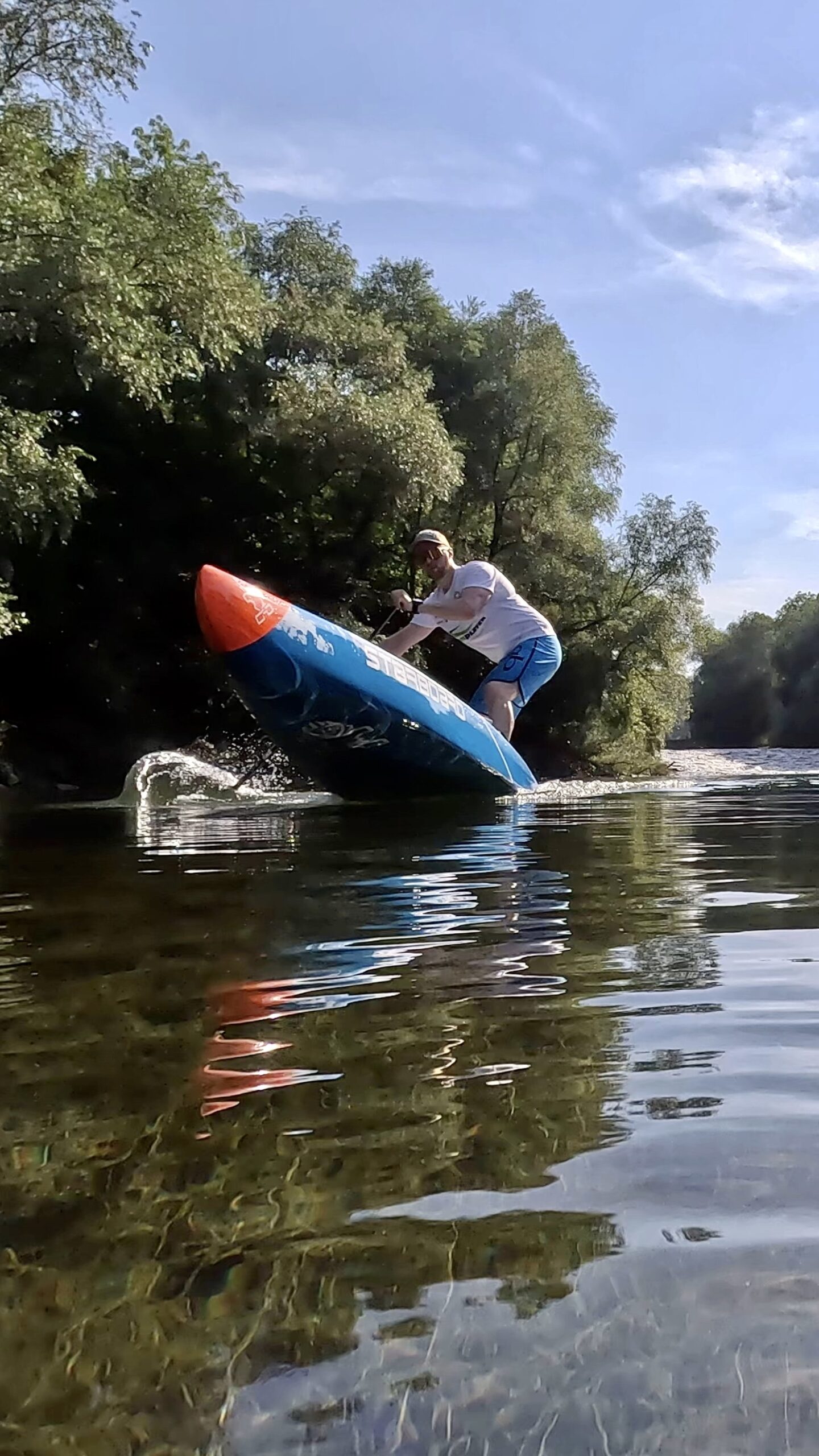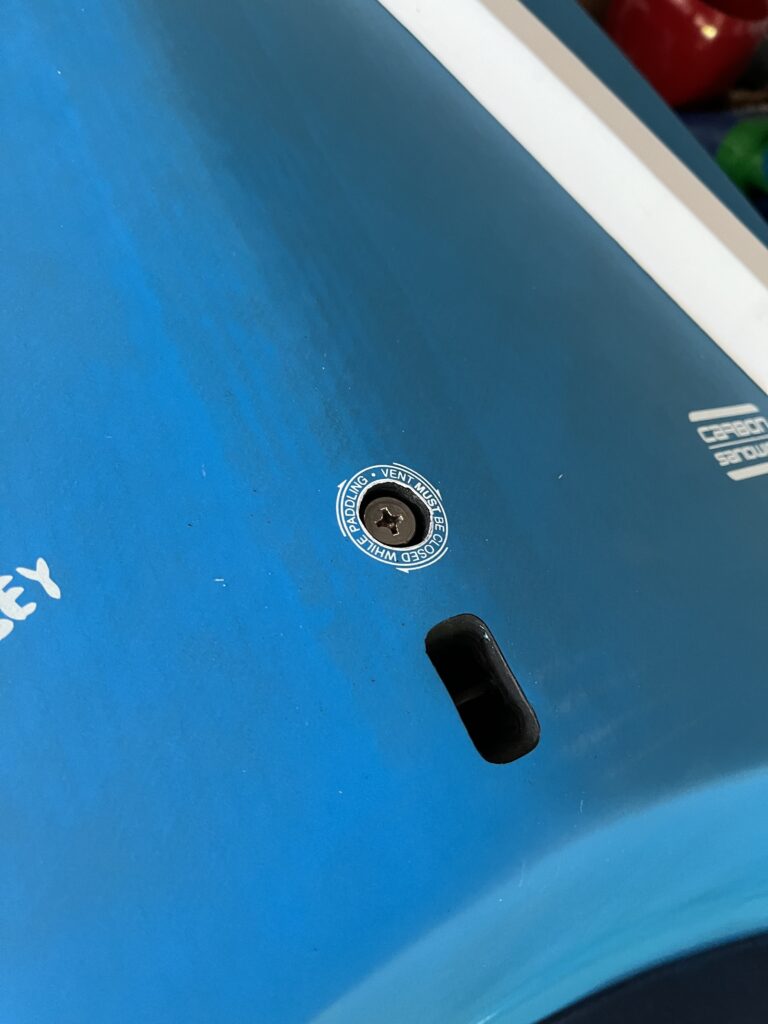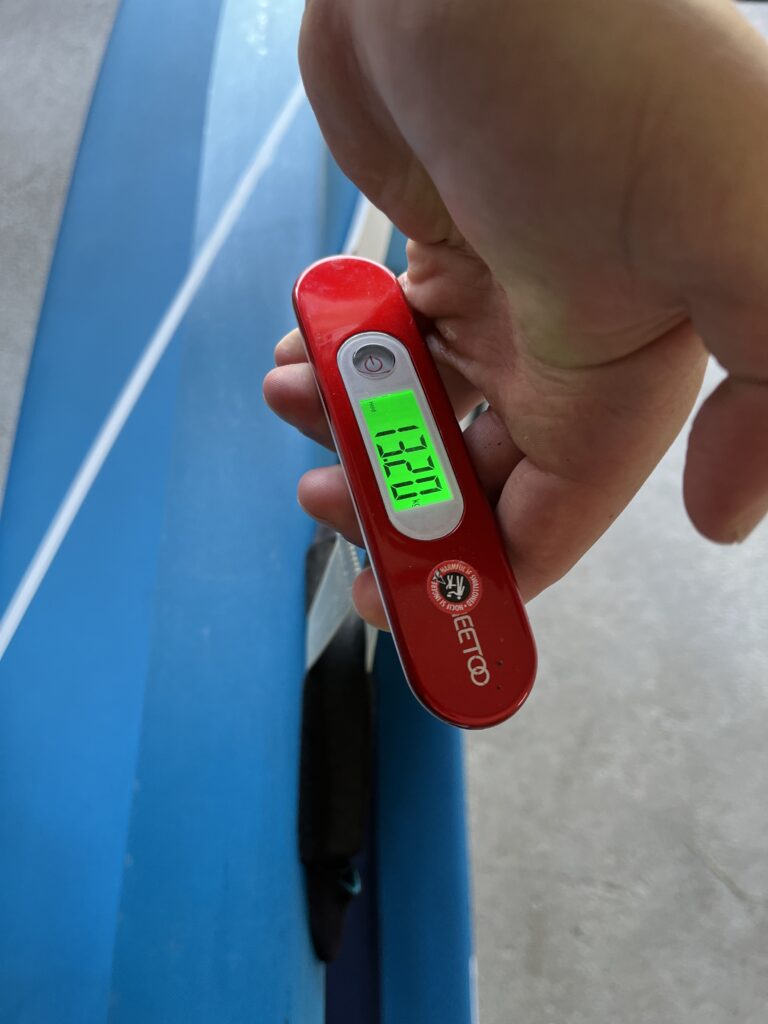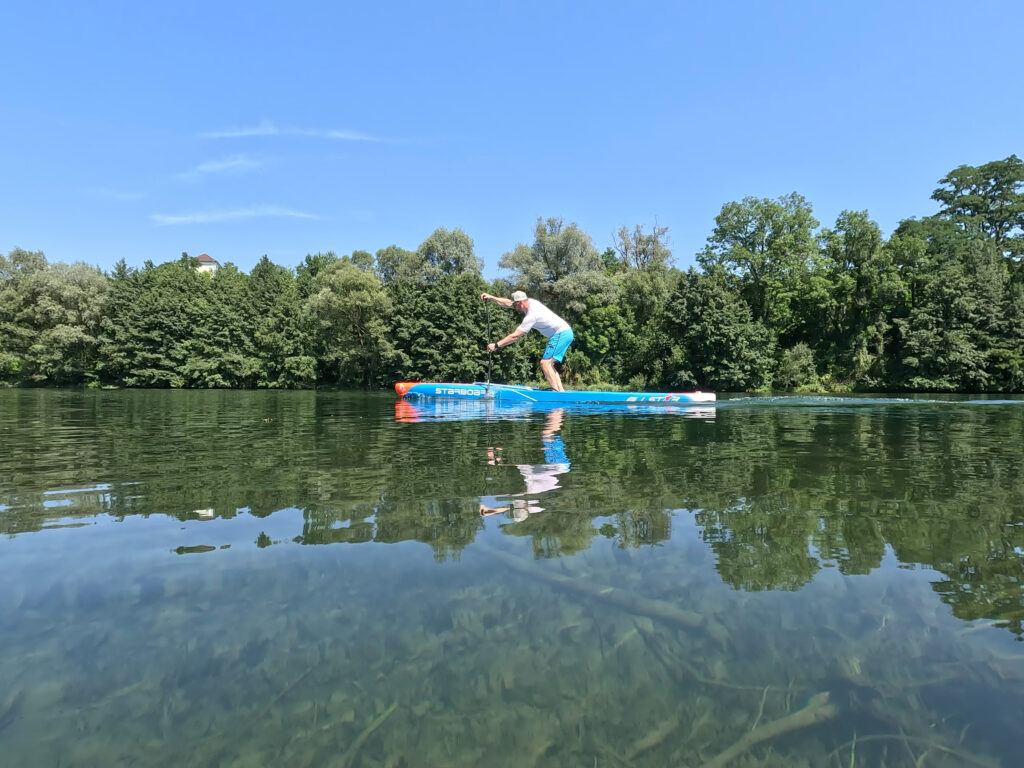Why the heck did we need a Starboard GenR?
Most, if not all of us hobby paddlers started by using flat deck boards in form of an inflatable SUP. Flatdeck Boards have their advantages when it it comes down to freedom of movement, beach races and in the surf… obviously not the terrain I’m mostly using my boards. Starboards Allstar Range has a long history and I think it’s the most successful race board of all times. For me the Allstar is much like a Porsche 911, – it has always been a great race board and each stage of evolution has had its fanbase, although I’d rate the 2018 Allstar as the beloved Porsche Carrera 993 and the 2020 Allstar maybe the 996 😉
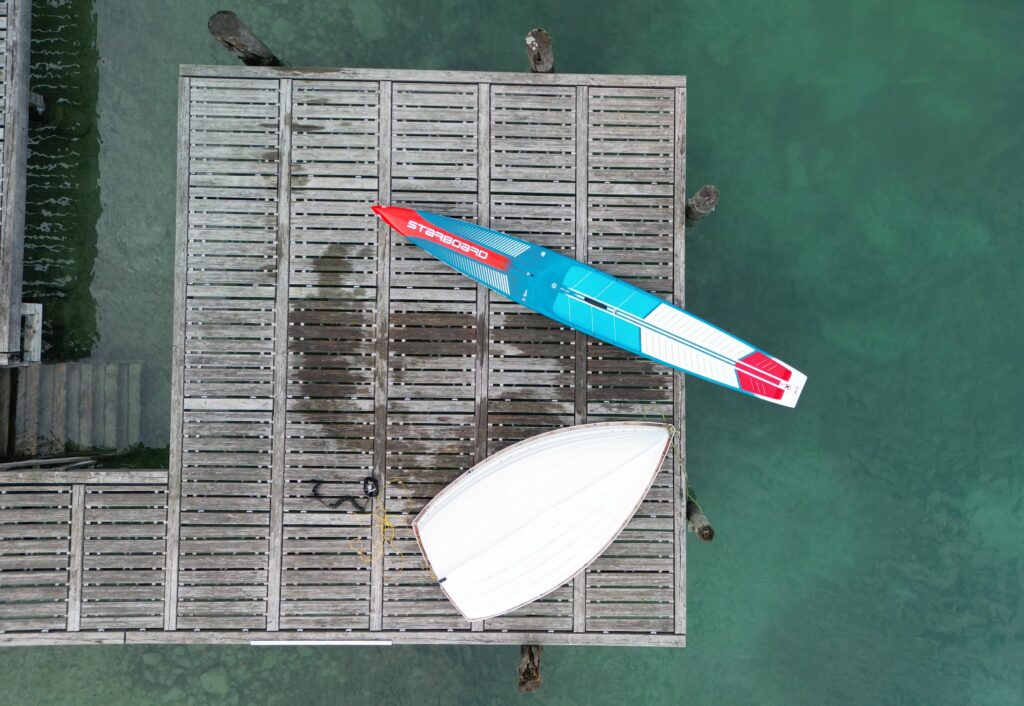
Flatdeck Allstars have been so successful, but it needed deep standing areas and therefore dugout versions of the Allstar, to make use of the new double concave, belly bottom shapes. Regarding rideability, I still believe that older Allstars maintain the top position.
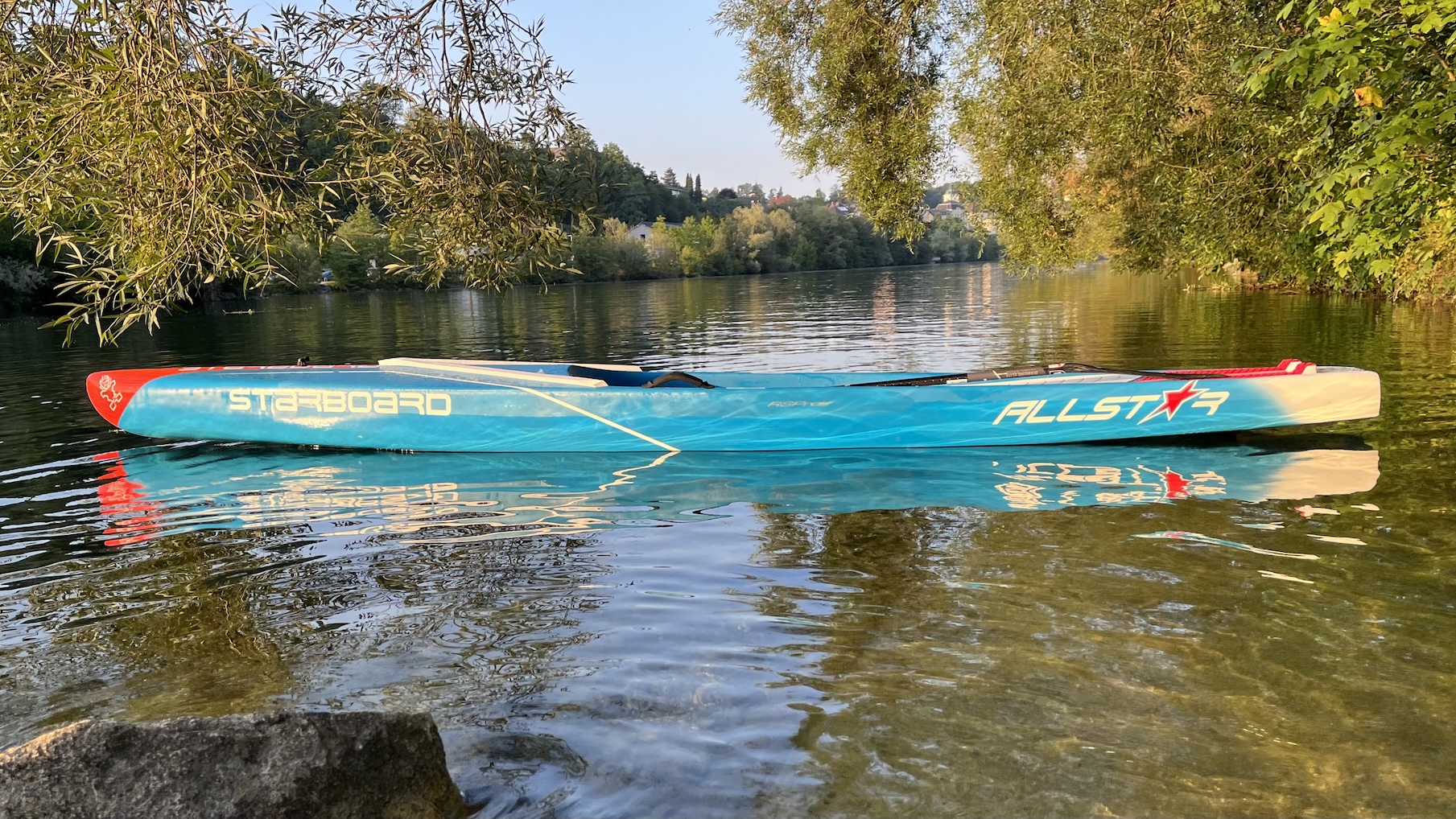
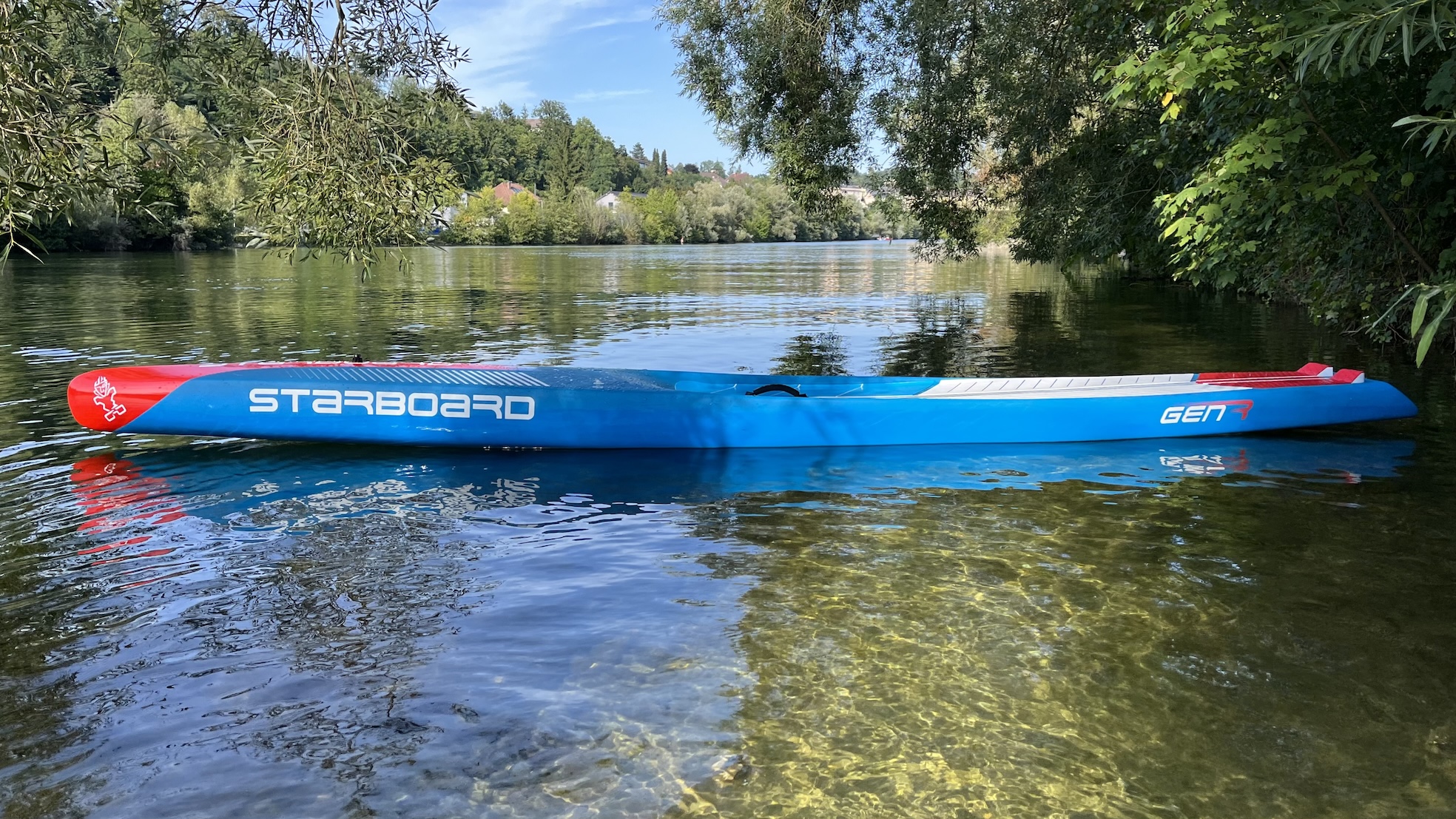
Sprint for flatwater, Allstar for everything… GenR for what?
First of all let me be clear about my opinion that Starboard has absolutely nailed it, offering a high performance flat deck board to their race board quiver.
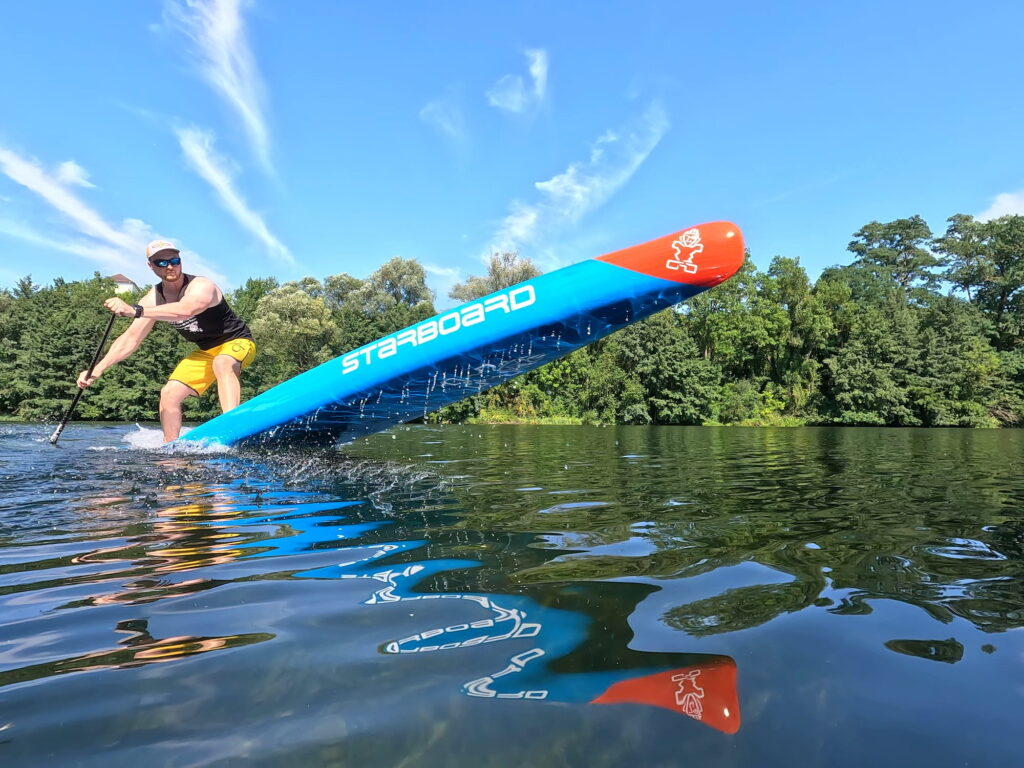
When watching races in the past year, it was obvious that even the biggest fans of older Starboard Sprint Boards went with the Allstar in most races, from sprint to tech race and long distance races. Up to 2021 Starboard had two boards that did perform well in most water states. 2022 the Sprint got so extremely flatwater focuses that even the best paddlers in the world went with the Allstar.
Finally in the year 2023, Starboard offered one dedicated flatwater rocket with the Sprint and a great do it all Allstar with higher rails than ever before and a deep, great dugout concept. Every mens world champion title was achieved with the current Allstar. Good riders will be fast with most raceboards, but if a concept would’t work, Top riders would avoid using it.
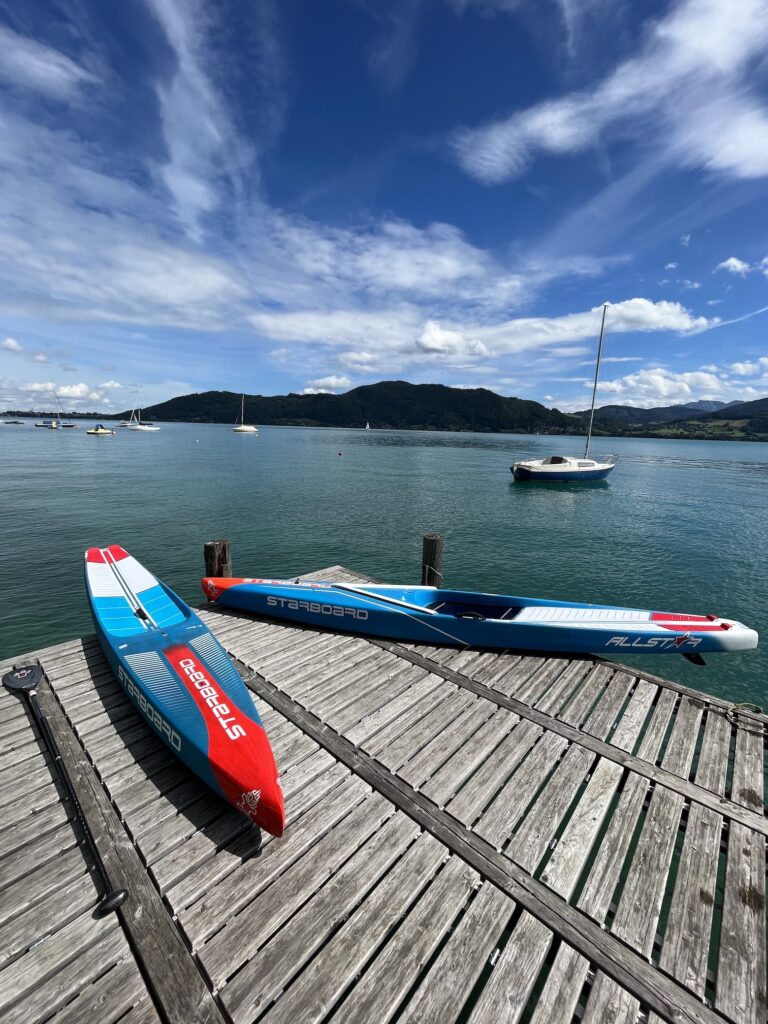
The GenR is so much different and still such a nice board to paddle, that I think most race newbies should get a grip on it when searching for a versatile race board. Starboard promised that it’s a board you’d feel comfortable instantaneously, and in terms of the 25″ Version in the more affordable blue carbon version, I can totally agree. First stability is good and there’s a seamless transfer to secondary stability . The rocker is just perfect for my current body weight, and the stiffness, especially in the blue carbon version, is superb for a flat deck board.
I had no issues doing stepback turns, moving back and forth on this board, although there was a feeling that it lacked a bit in secondary stability compared to the current Allstar, or the SIC RS.
Upwind the piercing nose performed absolutely great with moderate chop and downwind, catching bumps was as easy as with the Allstar but yes… it requires more footwork to keep it from nosediving. The deckpad feels just perfect but the kicked is at a position where people of my weight doesn’t have to go, as the tail tends to sink so quickly, that I had a hard time dialing it in. Once I got used to it, I found it better than the old RS, as I could perform faster turns due to the softer rails. Compared to the Allstar it wasn’t as easy, because the Allstar still turns great when stepping a foot length too short, and walking back isn’t an issue due to the better secondary stability.
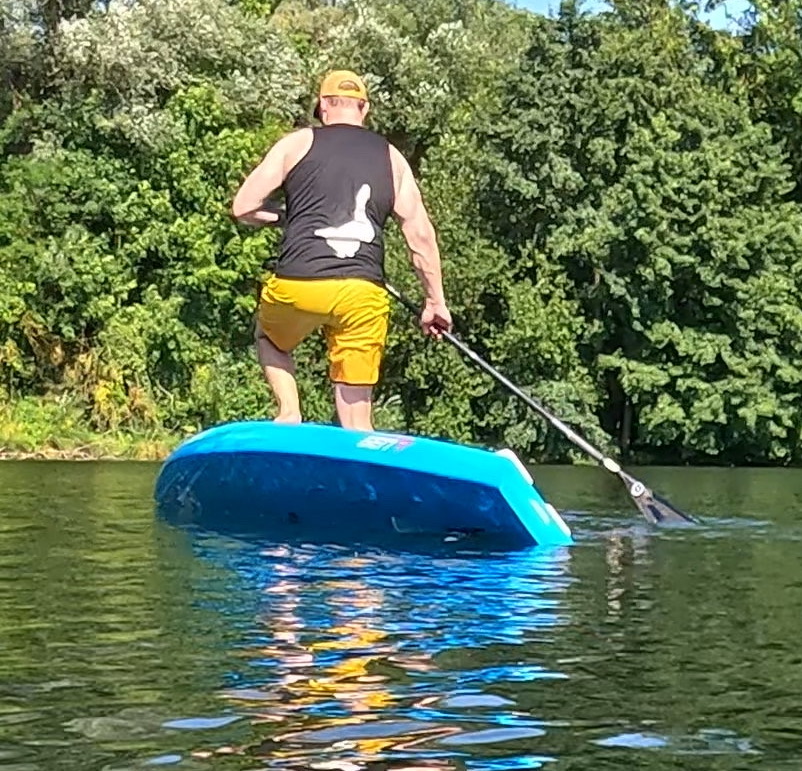
With side chop the SIC RS still has the edge over the GenR and when sprinting in choppy conditions it was easier for me to keep the Allstar gliding while still being able to put the required power to the blade. In this case neither the Allstar nor the GenR is a “easy to paddle” board. Boards like the Infinity Blackfish dugout, SIC Atlantis , or the SIC RS are still the way to go when searching for an easy to paddle raceboard.
The SIC RS lacks the great drainage system of the GenR, it slaps against bigger waves, when going upwind and it’s far softer in terms of flex.
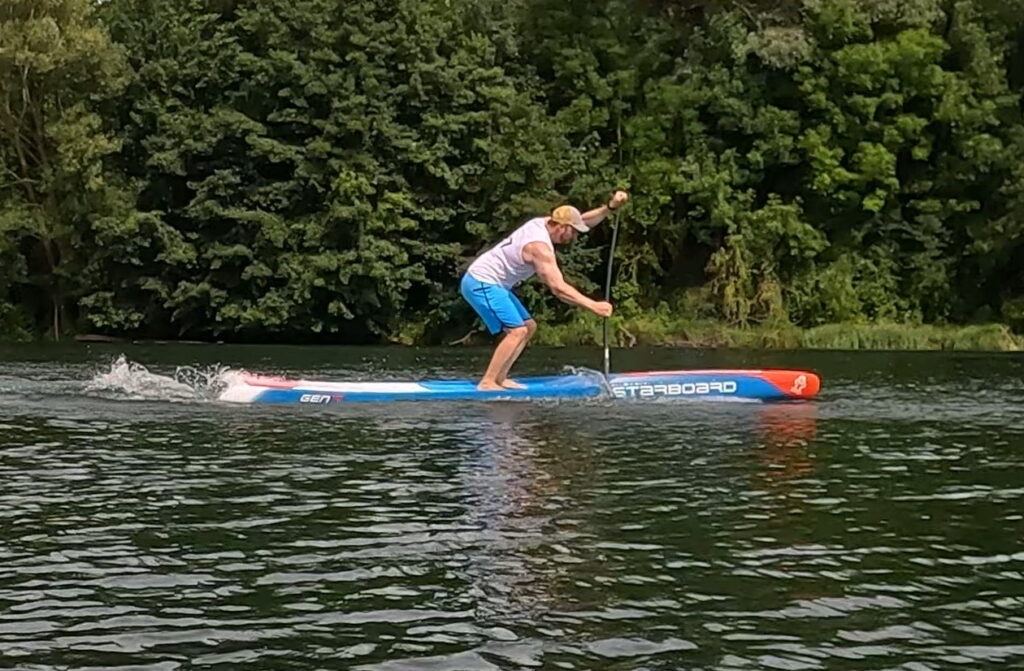
The Allstar is a big fat voluminous bomber that’s faster than it actually feels and once you took a swim, it’s not so easy to get back on and keep paddling. I love the Allstar and the concept works great in most conditions, but it will take much longer to feel comfortable with it compared to the GenR.
So, is the GenR a new Generation that hasn’t been there before? No… it shares a lot of DNA with Allstar Models 2013/2014 but it has enough volume for bigger riders, a great drainage system to keep the standing area dry and performs well in the flats and in choppy conditions.
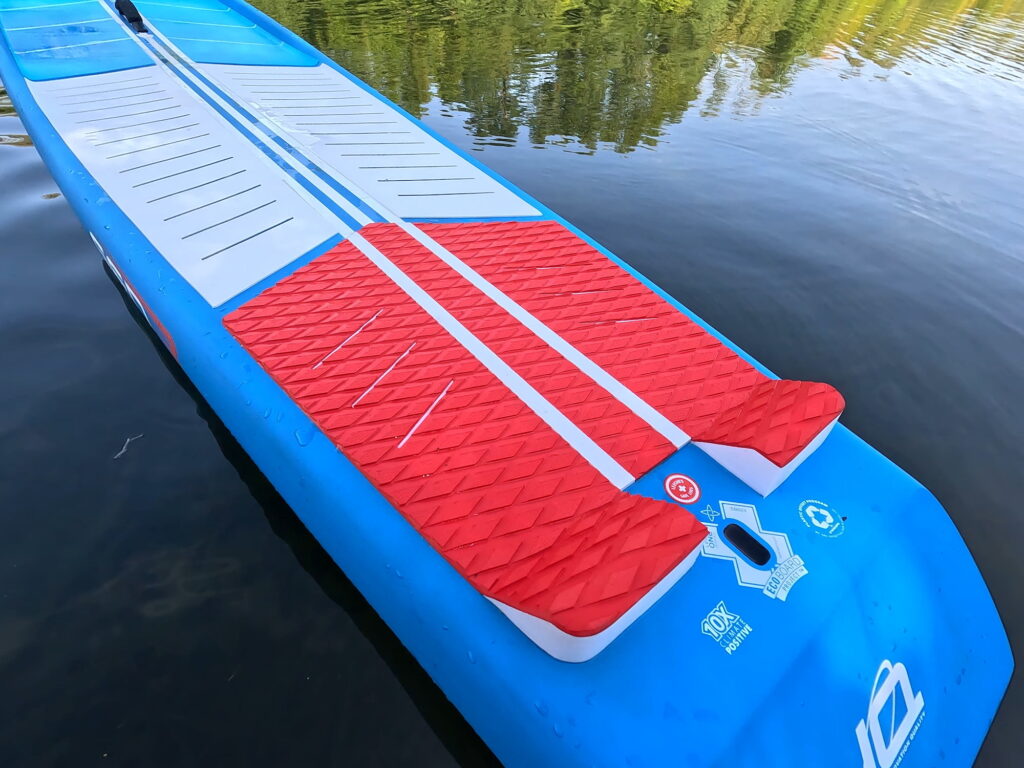
The Nose Design really works great and I wished current SIC RS Models would have only 80% of the GenR’s rigid feeling. I’d love to see Starboard merging a 2018 Allstar with the GenR. A move back to the full pvc wrap would also be beneficial to get back a good compressive strength.


Maybe you noticed that I texted a lot about the more affordable blue carbon version and that’s not only because the 25″ test board was delivered in that construction. The 23″ GenR was the full on blue carbon sandwich construction, that felt pretty light but it was too tippy for my taste and weightclass. Standing position was as high as with the 25″ and there was always a disconnected feeling to the board. The rails are soft and the nose is pulled in a lot, that’s why it doesn’t share the ultra easy handling of the SIC RS.
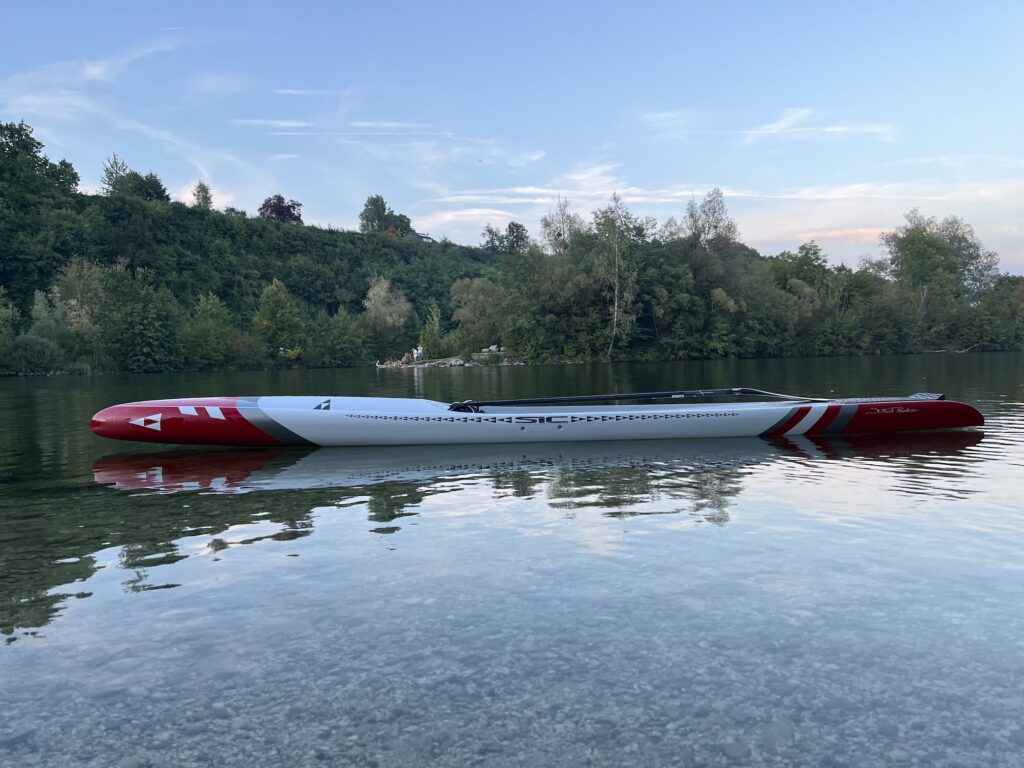
Sprinting
When doing sprints, I like boards that get on top of the water quite easily. The LightCorp GT is a little too nervous for me to put down all of my power within the first strokes, but after two or three strokes it keeps planning quite easily without boobing up and down the tail like crazy. With the 23″ GenR I could reach top speeds at my homespot of 13,6kph which was only 0,4kph less than with the GT. The RS is the easiest board to control while doing fast sprints, but at the moment I’m struggling to get past 13,4kph.
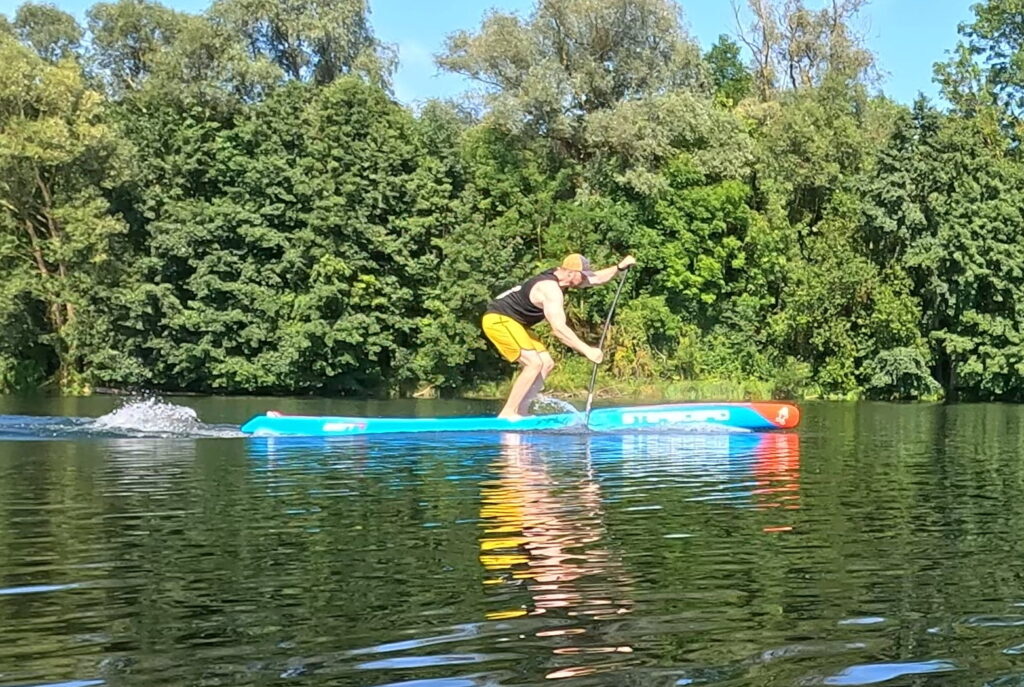
The GenR 25″ Blue Carbon is a great board for heavy riders
Heavy paddlers do need enough first stability and a good amount of rocker to get the sensation of glide we all are opting for. Additionally stiff boards do create trust when hitting bigger waves. That’s exactly where the GenR shines.
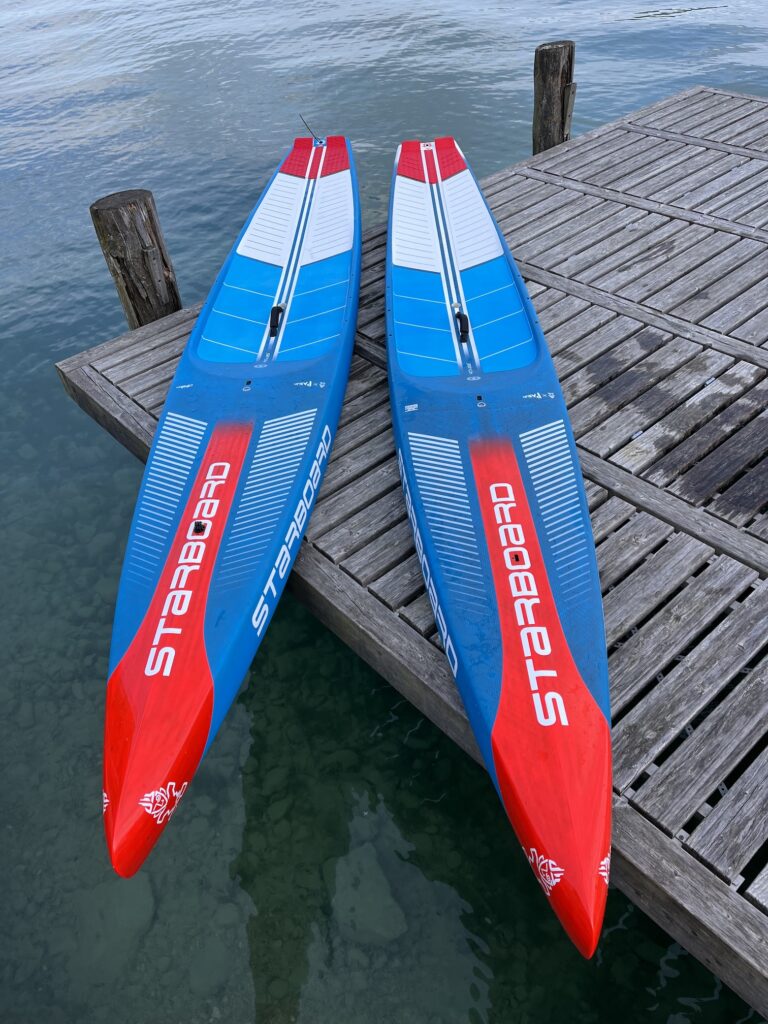
In flatwater conditions, the piercing nose creates a mostly silent ride with good glide. Upwind the mix of splitting waves and landing softly due to the rounded front section of the bottom area feels great. If you like the feeling of skipping a stone and getting on top of the water, some other board designs might do the trick easier.



Latest constructions from kinetic do have better haptics in terms of compressive strength. Indianas 2019 open ocean race had a great compressive strength, little flex and one year later lots of carbon was replaced with fiberglass to keep the weight down and lose that advantage. I don’t know why it’s so hard to get a real premium construction that would allow riders to walk on deck from tail to the top of the nose if they’d like to do that.
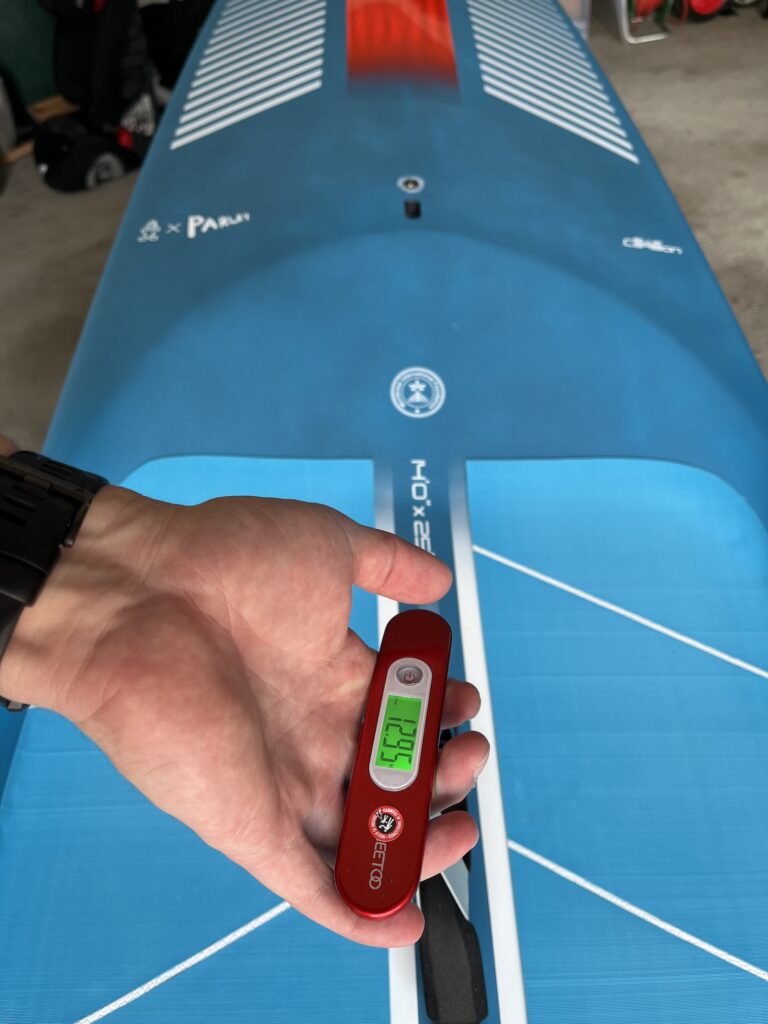
Starboard has done its job and created a fast new generation of flat deck boards that will attract many paddlers. Nothing is perfect but the GenR provides a very complete package without major flaws.
Wishlist
Please stay with the rocker line…. it suits most riders from 70-100kg
Lower the standing position by 4-5cm
Keep that volume
Go with a Gore Vent… it removes one thing you’ll always think about when storing your board. (Starboard has stated their reasons for why they have once again backed away from it)
Why not offering a deck carrying net down to the 21,5 or 23″ board?
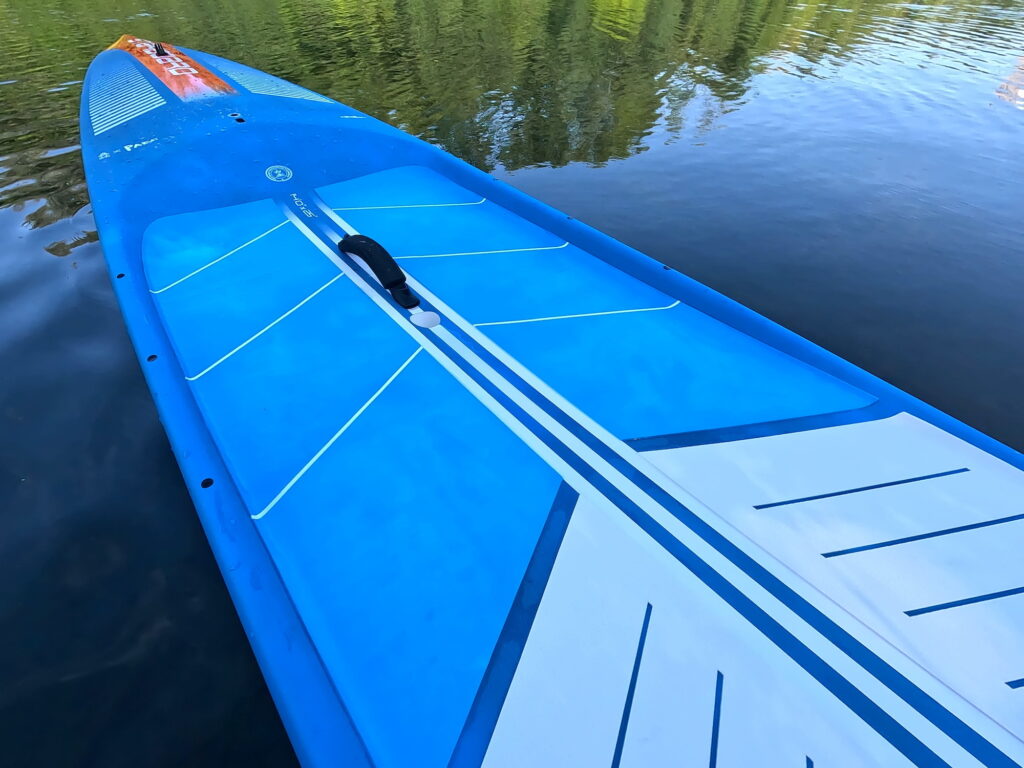
Bring back that full pvc wrap
Boardsocks and a good bag serves for a complete package, although I wondered why starboard is delivering the deflector… no-one would ever need that. Skip that board sock and the deflector and provide a good railsaver – would be much more beneficial.
Final verdict
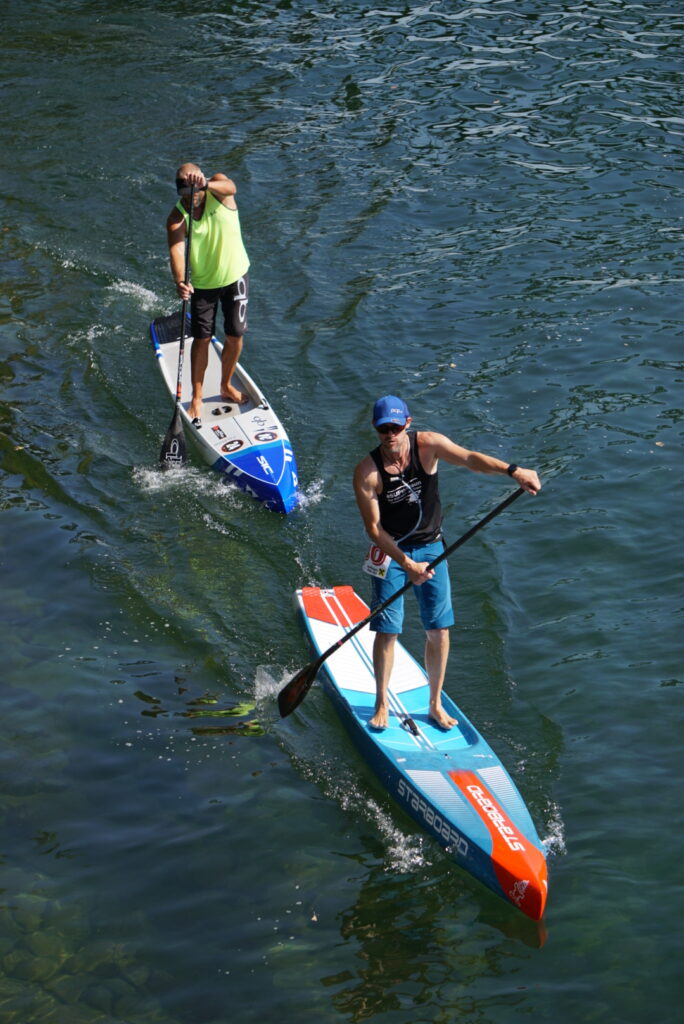
I’ve had a great time playing around with the GenR and if I could only use one board it would definitely be on my shortlist.
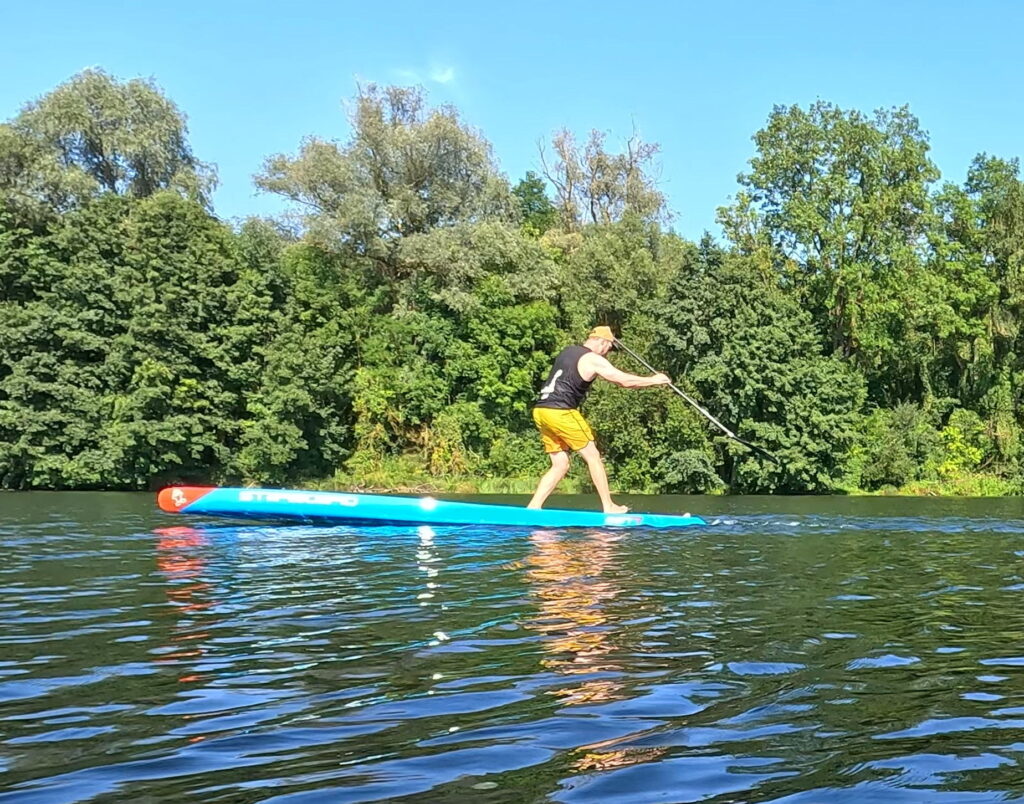
The Blue Carbon GenR has an absolutely great pricing and in terms of the 25″ GenR, weight difference wouldn’t be as high as with the 23″ GenR.
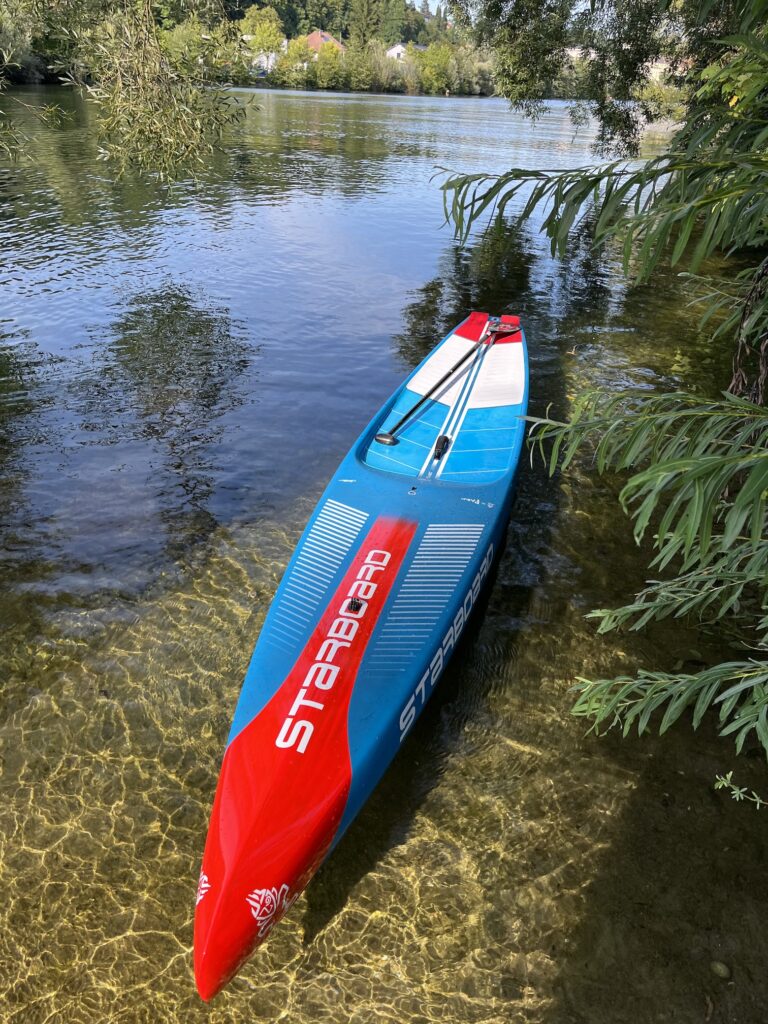
If you’re in the market for a one trick pony that does it all well, go to your dealer and check this board. Currently we’re mainly using SIC RS in our club, as each and every rider is able to use that board in wide variety of conditions. Now as the GenR would even serve as a board for heavier riders, I’m really hoping we’ll be able to buy that board next season. Earlier I was talking about Porsches… maybe the GenR is the Cayman GT4RS,- Ridable for most users, as fast as a GT3RS, yet distinct in its conceptual design.
